Blue-Throated Macaw Eggs
$65.00
Blue-Throated Macaw parrot Eggs
Outline
- Introduction
- Overview of Blue-Throated Macaws
- Importance of Understanding Their Reproduction
- Understanding Blue-Throated Macaw Parrot Eggs
- Description of the Eggs
- Typical Clutch Size
- The Breeding Season
- When Blue-Throated Macaw parrot Eggs
- Environmental Factors Affecting Breeding
- Nesting Habits of Blue-Throated Macaws
- Preferred Nesting Sites
- Role of Both Parents in Nesting
- Incubation Period
- Duration of Incubation
- Parental Roles During Incubation
- Caring for Blue-Throated Macaw Eggs in Captivity
- Importance of Proper Nesting Conditions
- Temperature and Humidity Requirements
- Challenges in Breeding Blue-Throated Macaws
- Low Reproduction Rates in the Wild
- Conservation Efforts to Improve Breeding Success
- Signs of Healthy Blue-Throated Macaw Eggs
- Identifying Fertile Eggs
- Common Issues with Egg Development
- Hatching Process
- What to Expect During Hatching
- How to Assist if Necessary
- Caring for Blue-Throated Macaw parrot Eggs
- Initial Care After Hatching
- Feeding and Growth Milestones
- Importance of a Proper Diet
- Nutritional Needs for Egg-Laying Females
- Recommended Diets for Breeding Macaws
- Common Problems with Macaw Eggs and Solutions
- Egg Binding and Its Prevention
- Dealing with Infertile Eggs
- Role of Conservation in Protecting Blue-Throated Macaw parrot Eggs
- Habitat Protection Efforts
- Breeding Programs and Their Impact
- How to Support Blue-Throated Macaw Conservation
- Ways to Get Involved
- Supporting Ethical Breeders
- Conclusion
- Summary of Key Points
- The Importance of Protecting Blue-Throated Macaw parrot Eggs
- FAQs
- How many eggs do Blue-Throated Macaws typically lay?
- How long does it take for Blue-Throated Macaw eggs to hatch?
- What is the survival rate of Blue-Throated Macaw chicks in the wild?
- How can I help in conserving Blue-Throated Macaw parrot Eggs?
- What should I do if my Blue-Throated Macaw isn’t laying eggs?
Description
Blue-Throated Macaw parrot Eggs
The Blue-Throated Macaw Parrot Eggs: A Complete Guide
The Blue-Throated Macaw, an endangered parrot species native to Bolivia, is as stunning as it is rare. These parrots are famous for their vibrant plumage and striking blue throats, but their reproduction, particularly their eggs, is a crucial aspect that often goes unnoticed. Understanding the characteristics and care requirements of Blue-Throated Macaw eggs is essential for conservation efforts and for those who are interested in breeding these magnificent birds in captivity.
Understanding Blue-Throated Macaw Parrot Eggs
Blue-Throated Macaw eggs are typically white and oval-shaped, similar to other parrot species. On average, a female may lay 2 to 3 eggs per clutch. However, due to the species’ endangered status, every single egg is invaluable. The eggs are usually laid in a staggered manner, meaning the first egg is laid a few days before the second, and so on. This natural process often results in chicks of different sizes within the same clutch.
The Breeding Season
The breeding season for Blue-Throated Macaws generally occurs between November and March. This timing coincides with the rainy season in Bolivia, which provides ample food sources necessary for successful breeding. Environmental factors, such as temperature and humidity, play a significant role in the success of breeding. In the wild, macaws choose specific trees for nesting that provide optimal conditions for egg incubation.
Nesting Habits of Blue-Throated Macaws
Blue-Throated Macaws are cavity nesters, meaning they prefer to lay their eggs in hollow tree trunks. These natural cavities offer protection from predators and harsh weather conditions. Both parents are involved in the nesting process, with the male typically guarding the nest while the female incubates the eggs. This cooperative behavior is crucial for the successful hatching of the eggs.
Incubation Period
The incubation period for Blue-Throated Macaw eggs is approximately 26 to 28 days. During this time, the female does most of the incubation while the male provides food. Maintaining the correct temperature and humidity levels is vital during this period to ensure the eggs develop properly.
Caring for Blue-Throated Macaw Eggs in Captivity
For those breeding Blue-Throated Macaws in captivity, replicating the natural nesting conditions is key to success. It’s essential to provide a suitable nesting box that mimics a tree cavity, along with maintaining optimal temperature and humidity levels. Visit Rollic Bird Talks for in-depth advice on setting up the perfect nesting environment.
Challenges in Breeding Blue-Throated Macaws
Breeding Blue-Throated Macaws presents several challenges, particularly in the wild where habitat loss and poaching have drastically reduced their numbers. Conservationists are working tirelessly to improve the breeding success of these parrots through habitat protection and captive breeding programs. Despite these efforts, low reproduction rates remain a significant hurdle.
Signs of Healthy Blue-Throated Macaw Eggs
Healthy Blue-Throated Macaw parrot Eggs are smooth and have a consistent shape. A fertile egg will typically show signs of development within a few days, such as veins appearing when the egg is candled (a process where a light is used to check inside the egg). It’s crucial to monitor the eggs regularly to ensure they are developing correctly.
Hatching Process
Hatching is an exciting yet critical phase in the life of a Blue-Throated Macaw. The chick will begin to peck at the shell, a process known as pipping, which can take several hours to a day. It’s important not to intervene unless absolutely necessary, as the chick needs to build its strength during this process.
Caring for Blue-Throated Macaw Chicks
Once hatched, the chicks require immediate care, including warmth and proper nutrition. In the wild, both parents share the responsibility of feeding the chicks a diet rich in regurgitated food. In captivity, it’s important to replicate this diet as closely as possible to ensure the chicks’ healthy growth.
Importance of a Proper Diet
A balanced diet is crucial, especially for egg-laying females. Nutritional deficiencies can lead to issues like egg binding, where the egg gets stuck in the female’s reproductive tract. Providing a diet rich in calcium, protein, and other essential nutrients is vital for the health of both the mother and her eggs. For more details on macaw diets, check out Rollic Bird Talks.
Common Problems with Macaw Eggs and Solutions
Egg binding is a common issue among macaws and can be life-threatening if not addressed promptly. Ensuring the female has enough calcium and proper hydration can help prevent this condition. Infertile eggs are another challenge; these should be removed to prevent them from spoiling and affecting the other eggs in the clutch.
Role of Conservation in Protecting Blue-Throated Macaw Eggs
Conservation efforts are critical for the survival of Blue-Throated Macaws. Protecting their natural habitat, establishing breeding programs, and preventing illegal trade are essential steps in ensuring these birds continue to thrive. Many organizations are dedicated to these causes, and public support can make a significant difference.
How to Support Blue-Throated Macaw Conservation
You can help conserve Blue-Throated Macaws by supporting ethical breeders, donating to conservation programs, and spreading awareness about the species’ endangered status. Learn more about how you can make a difference by visiting Rollic Bird Talks.
Conclusion
Understanding the reproduction and care of Blue-Throated Macaw parrot Eggs is essential for their conservation. From their breeding habits to the challenges they face, every aspect plays a role in the survival of this incredible species. By supporting conservation efforts and providing proper care in captivity, we can help ensure that these magnificent birds continue to grace our planet for generations to come.
FAQs
- How many eggs do Blue-Throated Macaws typically lay?
They usually lay 2 to 3 eggs per clutch. - How long does it take for Blue-Throated Macaw eggs to hatch?
The incubation period is about 26 to 28 days. - What is the survival rate of Blue-Throated Macaw chicks in the wild?
The survival rate is low due to predation and environmental factors, making conservation efforts crucial. - How can I help in conserving Blue-Throated Macaws?
Support conservation programs, ethical breeders, and raise awareness about their endangered status. - What should I do if my Blue-Throated Macaw isn’t laying eggs?
Consult

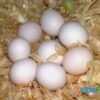
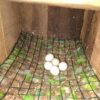
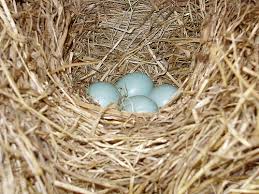
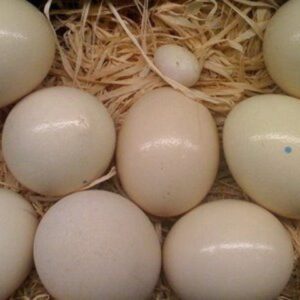
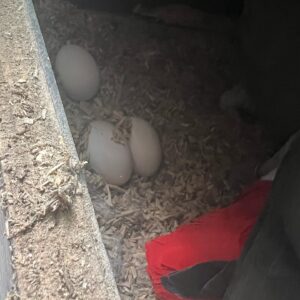
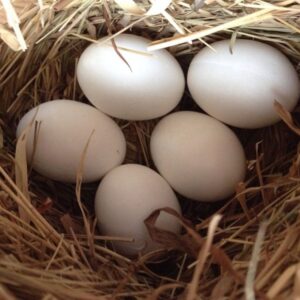
Reviews
There are no reviews yet.